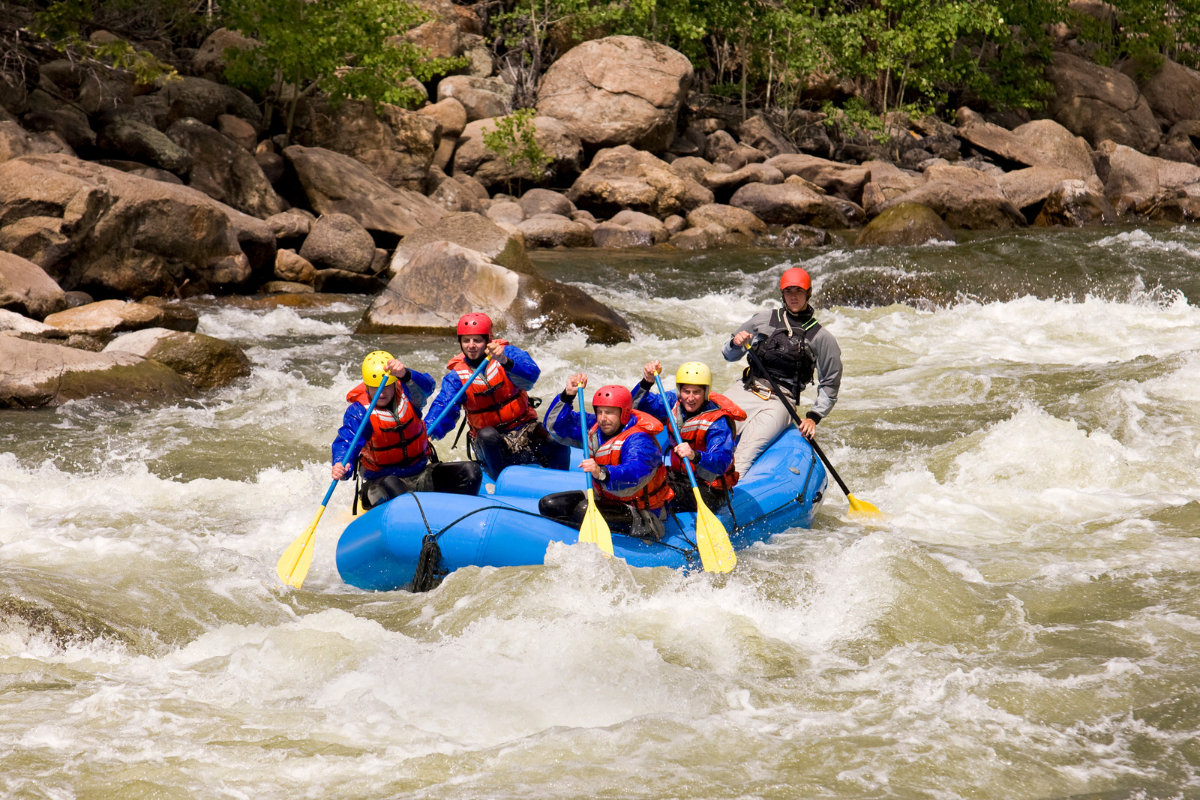HOW ARE WHITE WATER RAPIDS CLASSIFIED
The American White Water Organization includes specific classifications and safety protocol for white water rapids. Before Durango white water rafting, it’s important to review these classifications so you can feel confident about your trip. Whether you’re a first time rafter or a seasoned pro, you don’t want to find yourself unprepared. After all, rapid classifications are fickle. They vary depending on the weather, water levels, unexpected debris, and more.

White Water Rapid Classifications
There are six main difficulties when it comes to white water rapids classifications.
Class One. Class one features normal, low-rate rapids. This is when the water level is at its lowest. Rafters may notice some soft ripples or waves in the moving water. If debris is present, rafters can easily outmaneuver it. Both trained and beginner rafters can self-rescue in class one rapids.
Class Two: Class two is known as the ‘novice’ classification. In class two, rapids are easily scouted and feature wide channels. However, medium-sized waves are present within the stronger current. Beginner rafters should stay aware of hidden rocks and debris. Trained rafters can easily maneuver through class two rapids and rarely require group rescue assistance.
Class Three: Class three rapids feature more intermediate waves that can be difficult to maneuver in. Since waves are larger in class three, training is often required. These rapids need a combination of steering and boat control to avoid swamping the raft with excess water. If navigating class three rapids, scouting the area and going with a Durango white water rafting guide is encouraged.
Class Four: Class four rapids start to get a bit more advanced. In this class, rapids are more unpredictable and intense. Rafters will have a hard time navigating the larger rapids and a quick response is necessary to avoid swamping. The risk of injury for rafters in a class four increases, as well. Avoidance techniques like the Eskimo roll are required for class four rapids.
Class Five: Class five is known as the “expert” class. Only highly trained rafters should navigate rapids in this class. Violent and obstructed rapids are typically found in a class five. These complex rapids often develop hidden holes, steep drop offs, and continuous waves. Even expertly trained rafters are at risk for serious injury in a class five. Practiced self-rescue and avoidance techniques, along with years of experience, are required for these rapids.
Class Six: Class six features extreme conditions that should be avoided. The unpredictability of class six rapids can result in severe consequences. Oftentimes, rescue isn’t even possible in class six waters. Every precaution should be considered before attempting to raft in class six.
Before You Go
The higher the classification, the more dangerous and difficult your run will be. You can even experience multiple rapid classifications per trip. Some common things to consider before making a run are:
- The temperature outside and the temperature of the water. Colder water is more difficult to swim in, so extra safety during colder months is important.
- The location and length of the run. If your raft flips from turbulent rapids, how accessible is the location for help to arrive?
- Downed trees and other hazards. Recent storms can cause extra trouble when you’re out on the water. High waters paired with downed branches are a dangerous duo.
Be sure to always check local weather reports before heading out. Durango white water rafting professionals can help you determine the current classification of the river rapids, as well.
Posted By: Casey
